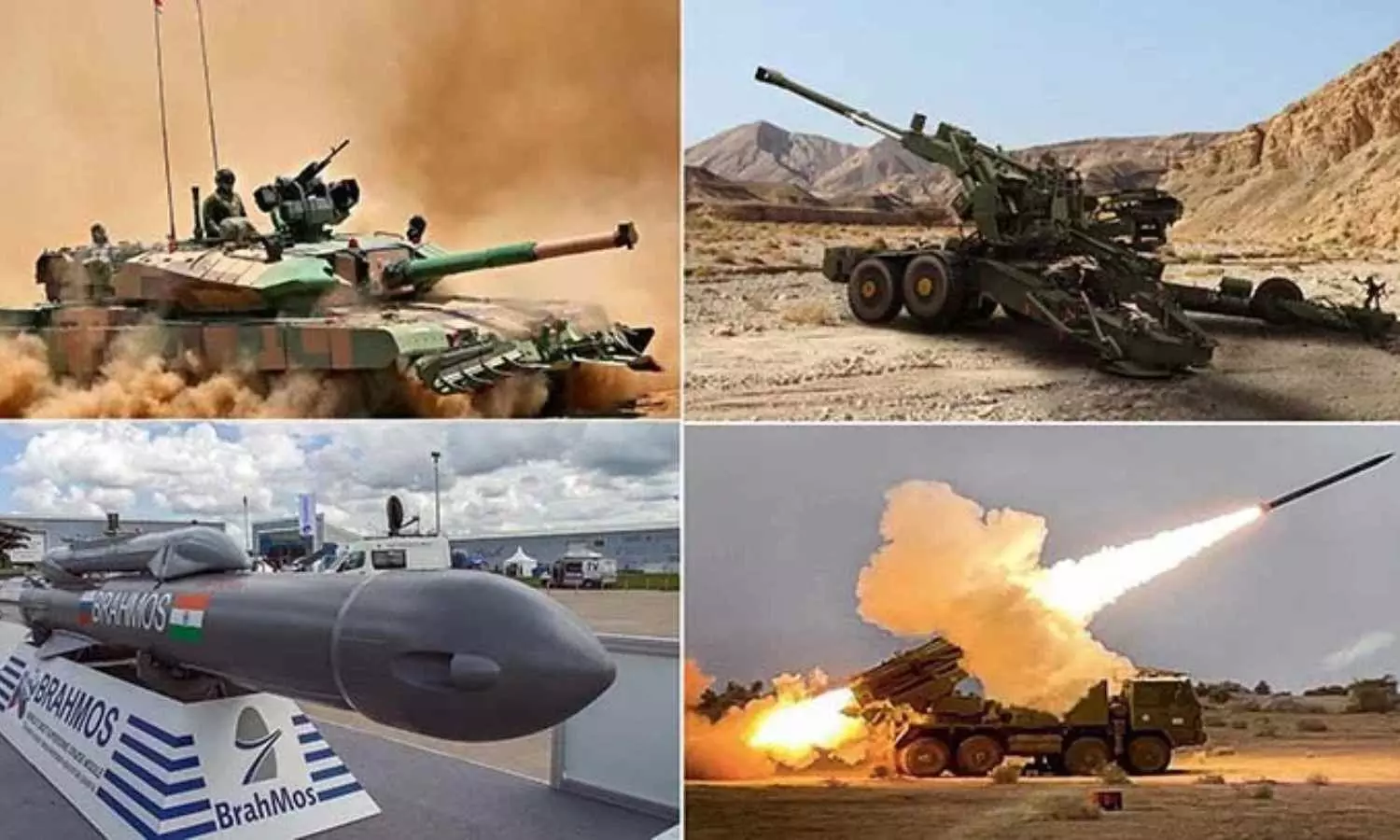Indian Private sector can bolster India’s defence capabilities
India’s private sector holds the potential to significantly bolster the nation’s defence capabilities through innovation, advanced manufacturing, and strategic collaborations.
Indian Private sector can bolster India’s defence capabilities

The Indian private sector can significantly modernize the nation's defense capabilities by increasing its participation in research and development, manufacturing, and integration of advanced technologies. This includes fostering greater collaboration with public sector entities, streamlining procurement processes, and focusing on emerging technologies like drones, AI, and space-based systems.
Backed by expanding defence expenditure, government incentives and a shift to self-reliance from import dependence, private sector players, such as the Tata group, Larsen & Toubro, Bharat Forge and Mahindra, and over 600 startups are stepping up to bolster India's defence capabilities, which they were once shut out of.
Public sector entities have historically dominated the Indian military-industrial complex, though emerging private players are slowly gaining ground. The public sector has dominated production and research and development (R&D). The major entities in the production domain are the 16 defence public sector undertakings (DPSUs), seven of which were converted out of the erstwhile ordnance factories (OFs), effective October 2021.[4] These DPSUs function under the administrative control of the Ministry of Defence (MoD).
Of the nine old DPSUs, four—Mazagon Dock Shipbuilders Limited, Garden Reach Shipbuilders and Engineers, Goa Shipyard Limited, and Hindustan Shipyard Limited—are dedicated shipyards responsible for the construction of various types of warships for the Indian Navy and Coast Guard.[5] Each of the remaining five old DPSUs has a specific domain expertise: Hindustan Aeronautics Limited (aircraft), Bharat Electronics Limited (electronics), Bharat Dynamics Limited (missiles), Mishra Dhatu Nigam Limited (special alloys) and BEML Limited (vehicles and earth moving equipment).
Apart from 16 DPSUs, the MoD also controls the key defence R&D agency, the Defence Research and Development Organisation (DRDO). Established in 1958, the DRDO is involved in developing technologies for both strategic and conventional weapons. With a human resource base of 21,730 (including a cadre of 6,713 scientists and engineers), and a budget of INR 238.55 billion (approximately US$2.86 billion) in 2024-25, its R&D activities span almost all aspects of defence technologies, including strategic and conventional missiles, combat aircraft, tanks, gun systems, electronics, naval systems, and life sciences.
The private sector’s contribution to defence production reached 21% in FY24, amounting to ₹26,506 crore, accounting for 60% of India’s defence exports. While the challenges remain, the trend indicates a promising trajectory for self-reliance in defence.
The IAF aims to increase aircraft production to 35-40 per year, with increased participation from the private sector. While considering strategic acquisitions like the Rafale and potentially the F-35 as a stopgap, the long-term focus is on home-grown systems. The IAF aims to have a fleet of 60 squadrons (approximately 1000 combat jets) by 2047.
The Indian Army is focusing on modernising its artillery, armoured vehicles, and soldier systems. The Army is also leveraging the iDEX scheme to induct innovative technologies developed by startups and MSMEs.
As of January 2025, the Navy had 64 vessels under construction in India. The Navy plans to have 155-160 warships by 2030 and 175-200 by 2035. The focus is also on nuclear-powered submarines (SSNs) and underwater drones to enhance maritime capabilities.
India has been steadily integrating artificial intelligence into its defence strategy. AI is designed to ensure the integration of reliable emerging technology into critical defence operations. It is used for both supporting functions, like intelligence surveillance, and navigation and offensive functions like selecting targets, drone swarms, AI-driven hacking etc. and studying cyber-attacks and protective strategies.
The Make in India program gains momentum with import substitution, targeting a $1.7 trillion turnover and $350 billion export in military goods and services by 2025.
India's Defence Procurement Policy, 'Make in India' initiative, and offset policies forecast substantial growth, with projections indicating a decade-long electronics consumption of US$ 70-72 billion. The Make in India program gains momentum with import substitution, targeting a $1.7 trillion turnover and $350 billion export in military goods and services by 2025.
In the coming years, exponential growth is anticipated in both combat systems and non-platform-based programs, paving the way for smart battalions, presenting a dual opportunity for electronics manufacturing in India. Critical projects in avionics, night vision devices, missile electronics, electronic warfare, robotics, radars, and UAV navigation systems highlight the demand for electronic solutions.
India will develop a fifth-generation deep penetration Advanced Medium Combat Aircraft (AMCA) in line with the futuristic requirement of the Indian Air Force. The initial cost of the project will be Rs 15,000 crore. Indian firms are working to develop a medium-weight deep penetration fighter jet with advanced stealth features to bolster its Air Force's power capability.
The defence exports today have touched Rs 16,000 crore from a meagre Rs 1,000 crore nine-ten years ago. A target has been set to achieve Rs 50,000 crore of exports by 2028-29.

